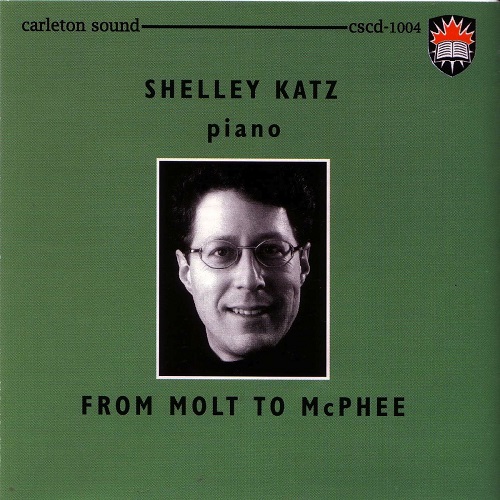From Molt to McPhee
In the 1760s Canadians were still trying to adjust to the major changes that had taken place in their country. Keyboard instruments were not plentiful and the best instruments of the French colonial period had in most cases returned with the more well-to-do families to France. F. H. Glackemeyer, bandmaster of one of the German mercenary regiments used by the British, arrived in 1776. He complained that his students, Misses Augusta and Frederika von Riedesel, would make better progress if they had a better spinet. By the early 1780s several merchants including Glackemeyer were advertising « elegant piano fortes » for sale in Quebec City, Montreal, and Halifax. Also teachers of this relatively new keyboard instrument became more available. Before the end of the century pieces were being written out and even composed in Canada to play on the fortepiano.
« Katz plays this music with affection and skill, not overstating the slighter pieces, and he has the bravura to carry off the more showy moments. »
-John Kersey, International Record Review
THEODORE F. MOLT
1. Post Horn Waltz with Variations
CALIXA LAVALLÉE
2. Vole au vent
ALEXIS CONTANT
3. La Lyre enchantée
GUSTAVE GAGNON
4. Reflets du passé
COLIN MCPHEE
5-8. Four Piano Sketches
GEORGES-EMILE TANGUAY
9-11. Trois pièces brèves
CLARENCE LUCAS
12. Ariel, Scherzo
GEORGES-EMILE TANGUAY
13. Pavane
CALIXA LAVALLÉE
14. The Ellinger Polka, Polka de salon
EMILIANO RENAUD
15. Berceuse
CALIXA LAVALLÉE
16. Première Valse de salon
17. L’Oiseau mouche, Bluette de salon
GEORGE W. STRATHY
18. Caprice (di bravura)
CHAS. W. SABATIER
19. Mazurka Caprice
JEAN-CHRYSOSTOME BRAUNEIS
20. Marche de la St-Jean Baptiste

